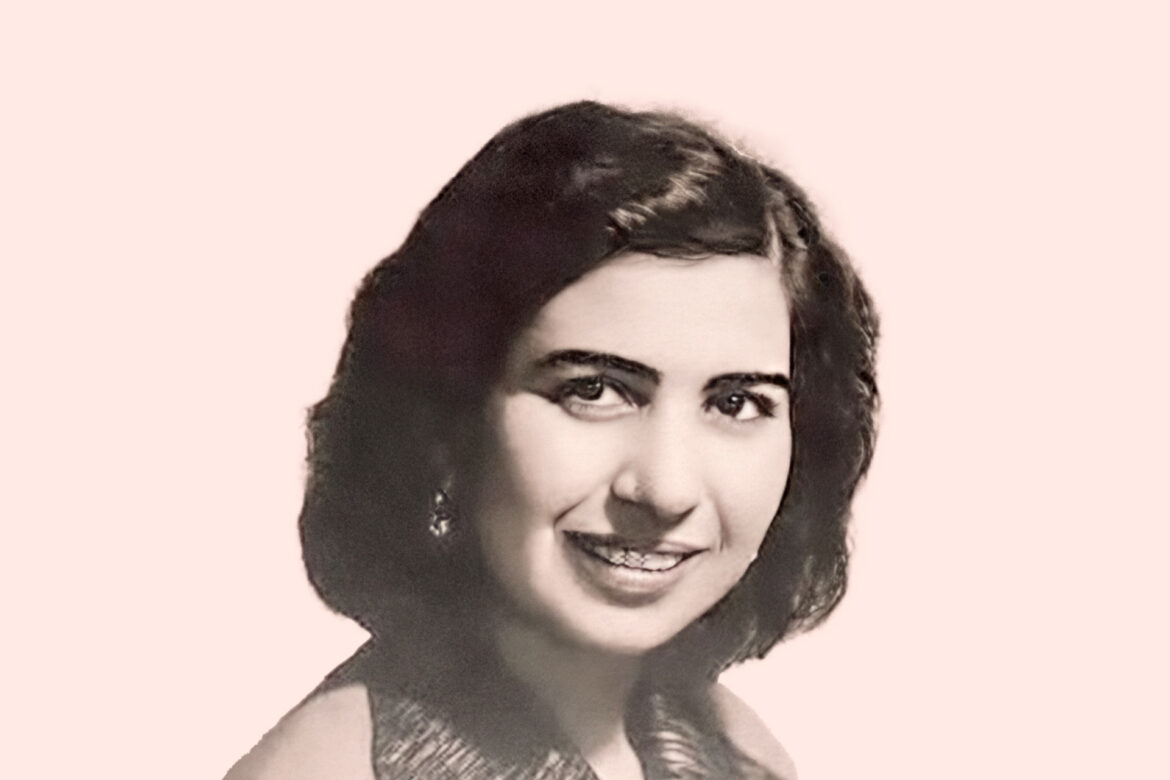Fatima Al-Muheb (1927-2006) is a Palestinian visual artist. She believes that artistic culture is necessary for every human being. She began practicing painting as an amateur. She painted a painting of King Farouk and sent it to him. Thus, she was able to join the Art Teachers School in Cairo to become the first Palestinian girl to study art outside Palestine.
Birth and upbringing
Fatima Ibrahim Al-Moheb was born in Palestine, exactly in the old city of Hosh Al-Shawish in Jerusalem, on January 10, 1927.
Study and training
After the death of Fatima’s loving father, she returned to Jerusalem, entered school, and excelled in drawing, despite the society at that time not understanding this hobby and distinguishing it from photography, and she received her secondary education in Palestine.
As a result of her excellence, she obtained a scholarship to study arts at the Higher Institute of Fine Arts at Ibrahim Pasha University in Cairo. She then completed her studies in the United States of America and was accepted on April 10, 1946.
Fatima Al-Muheb spent 3 years in the diploma to excel, knowing that the duration of study in the Fine Arts Department is 5 years. She joined the third year and was transferred to the fourth and then the fifth year, and she obtained the diploma on June 27, 1947.
Functional experience
After graduating, Al-Moheb worked in the Jordanian Ministry of Tourism, where she was promoted to head of department, and later moved to work as a technical director in the Jerusalem District Education Directorate.
I held a card issued in Amman for the position of a painter for tourism advertising, and another for the position of head of a department.
She moved to the Jordanian Ministry of Education to work as an art education supervisor, and was part of the committee charged with preparing the art education curriculum.
She returned to Palestine and settled in Jericho after 1994. She was influenced by the city’s architecture and antiquities, so she painted on the mosaic of Hisham’s Palace or Khirbet al-Mafjar the bathroom floor, which shows the tree of life with a lion and a deer.
There are also many murals in the city of Jericho in institutes and schools that show the artists who painted them were influenced by the works of Fatima Al-Muheb, such as murals showing the wells of Jericho and Ain Al-Sultan.
Cultural and artistic experience
Fatima Al-Muheb painted people and landscapes, and her drawings were of a realistic and simple academic nature. Despite this, her plastic activity was limited, and she did not participate extensively in plastic exhibitions. She had a beautiful painting containing tourist attractions that decorated the Jerusalem airport hall.
She competed with about 3,500 artists in the “Anonymous Political Prisoner” competition in London, and participated with a painting of a blindfolded woman representing a psychological prison, with a soldier on her left, symbolizing war, and on her right, a woman and a child, symbolizing peace. She won first place in the competition, and a statue of her was displayed in the Tate Modern Museum in London.
Her photo appeared on the covers of Egyptian and Swiss tourist magazines and in Italian and American tourist films about the Church of the Nativity.
One of her paintings was chosen for an international art exhibition under the supervision of the American Holiday magazine. The title of the picture was “Convoy Leader,” and she held an exhibition on board a ship for the American Shipping Company.
She received the Fine Arts Award in Cairo from the late Palestinian President Yasser Arafat during the Palestinian Cultural Week held in Cairo in 1990.

The works of Fatima Al-Muhib
Fatima Al-Moheb has several paintings, including “The Unknown Political Prisoner,” which was published on the cover of Al-Sharq magazine in Beirut in issue No. 96 dated January 1, 1954.
The painting depicts a blindfolded woman representing a human being, and the diary in her hand is a symbol of politics. The woman is tied with ropes representing the psychological prison, which is sacrifice. On her left is a soldier, symbolizing war, and on her right is a woman and a child, symbolizing peace.
The idea of the painting is that the human being and the map on the pedestal mean that the subject is human and not limited to a specific gender, and that he sacrifices his freedom to help others in situations of peace and war and to embrace any of the ideas and beliefs without being persecuted or subjected to violence.
Her works also include a painting of the caravan leader, a painting showing Jordanian Bedouin women, and a mural of the Dome of the Rock.
Her death
Fatima Al-Muheb died in the city of Jericho, Palestine, in 2006.



